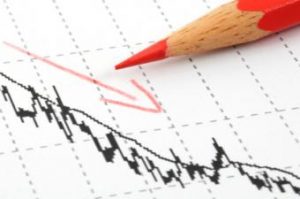 The COVID-19 pandemic has caused the largest drop in American financial satisfaction in nearly a decade, according to The American Institute of CPAs (AICPA) Q1 2020 Personal Financial Satisfaction index. The report measured 32.9, a 20% (8.29 point) decrease from the previous quarter. This is the largest quarterly drop the PFSi has experienced since the Great Recession (Q4 2009).
The COVID-19 pandemic has caused the largest drop in American financial satisfaction in nearly a decade, according to The American Institute of CPAs (AICPA) Q1 2020 Personal Financial Satisfaction index. The report measured 32.9, a 20% (8.29 point) decrease from the previous quarter. This is the largest quarterly drop the PFSi has experienced since the Great Recession (Q4 2009).
The most notable factor driving the quarter-over-quarter PFSi decline was the PFS 750 Market index, an AICPA proprietary stock index comprised of the 750 largest companies trading on the US Market. In comparison to its Q4 2019 record high, the Market index is down 21 percent (20.9 points), wiping out all its gains from the past three years.
The next largest contributor to the PFSi decline is the Inflation index which is up 33.8% (10.7 points) from the previous quarter. An increase in inflation adds to financial pain, driving down the PFSi overall. Inflation is the most volatile factor contributing to the PFSi and with absolute levels so low, small changes result in large percentage gains. This factor relies on data released in late March that reflects the Federal Reserve’s February level before rates were cut to near zero.
“We’re hearing from CPA financial planners across the country that now more than ever their clients are relying on their guidance to navigate these extraordinary times,” said Andrea Millar, CPA/PFS, Association of International Certified Professional Accountants Director of Financial Planning. “From giving clients peace of mind that principles of financial planning haven’t changed, to proactive planning with tax-efficient portfolio moves, and small business loans, CPAs have been working tirelessly to secure their clients financial future and to help them realize their life goals.”
Many Americans are struggling to pay for things including their rent and mortgage as well. Black Knight reports that as of April 16, more than 2.9 million homeowners, or 5.5% of all mortgages, have entered into COVID-19 mortgage forbearance plans. This population represents $651 billion in unpaid principal and includes 4.9% of all GSE-backed loans and 7.6% of FHA/VA loans.
A new survey by the Mortgage Bankers Association (MBA) found that the number of home loans in forbearance rose from 2.73% to 3.74% during the week of March 30 to April 5.
Mortgages backed by Ginnie Mae had the largest weekly growth of 1.58% and the highest overall share in forbearance requests (5.89%).

 DSNews The homepage of the servicing industry
DSNews The homepage of the servicing industry









